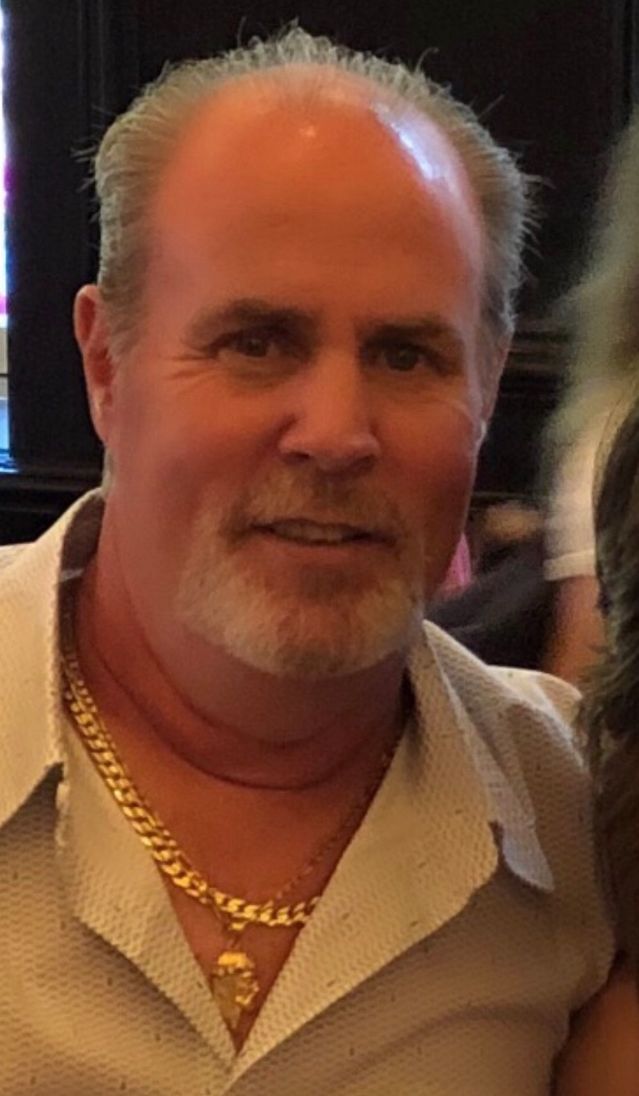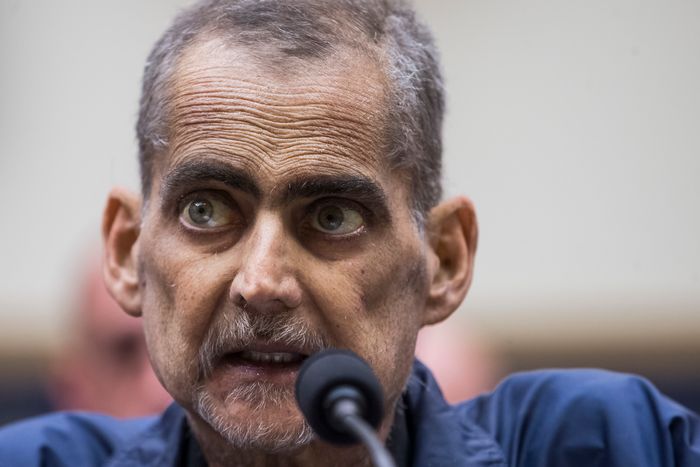The feelings and sounds of Sept. 11, 2001 always stuck with Chris Sorrentino. What came years later was the “agonizing, extreme pain” — and what followed next was the help Sorrentino hopes many more will receive.
First were the sounds the Brooklyn man heard of the second plane flying far too close to lower Manhattan’s skyline, as he walked to his job as a market maker on the floor of the New York Stock Exchange.
Then came Sorrentino’s visions of smoke “just barreling through all the streets.”
Next were his memories of being “covered in soot” in his suit and tie, jumping with approximately 10 coworkers onto the boat his wife navigated from Brooklyn to the South Street Seaport. He was back at work one week later.
“‘Unless you lived it, you can’t explain the feeling and sound of that day.’”
“Unless you lived it, you can’t explain the feeling and sound of that day,” said Sorrentino, 59, now a maintenance engineer for a Brooklyn hotel. “The most horrific day of my life, I can tell you that.”
Nearly two decades later, the after-effects of that horrific day cast a shadow on a joyous day. It was May 4th, 2019, the wedding day of Sorrentino’s son. The father of the groom spent it gritting his teeth through the pain that felt like a constant burn or vise-tight pinch.
One month later, Sorrentino learned he had bladder cancer. Two months after, Sorrentino underwent surgery in a race against the aggressive disease that had “spread like wildfire.”
The approximately seven-hour surgery capped months of appointments and tests where doctors could not determine what afflicted Sorrentino.
“My surgeon told me, ‘Thank God you were standing up for yourself to keep going and not take no for an answer … Another three, four months, we would have been giving you a timeline.’”

Chris Sorrentino enrolled in the World Trade Center Health Program, and received a six-figure award from the September 11th Victim Compensation Fund. He wants more people to know about the financial help available
Photo courtesy: Chris Sorrentino
If Sorrentino’s determination changed the plot line of his story, so did his enrollment in the World Trade Center Health Program after his bladder cancer diagnosis. The World Trade Center Health Program is a federal program that will pay for all his health care related to the consequences of 9/11.
For all his doctor visits, procedures, post-surgery hospitalizations, check-ups and medications, Sorrentino says he’ll have to pay just one pending $2,600 bill for a cardiologist’s check-in.
He’s also received money through the September 11th Victim Compensation Fund, a separate payment program administered by the Justice Department. The fund caps pain and suffering awards for 9/11-related cancers at $250,000, $90,000 for non-cancer conditions and also pays economic loses.
Sorrentino received a six-figure award last month, noting it was on the high end of the range. “I’d give it all back in a heartbeat if I didn’t have to go through what I went through,” he emphasized.
But nobody can undo the past, so Sorrentino will tuck away the money as a nest egg — or as a backstop against whatever financial uncertainties lie ahead. ”The fund is a godsend to anyone who really needs and deserves this,” he said.
The problem, says Sorrentino, and others, is there still may be too many people who don’t realize the programs are for them. Whenever he talks about 9/11 with people he learns were there, he’ll bring up the assistance he received — and how it might help them one day too. They don’t always know these funds are available to them.
‘There’s no way to know how many of those people might get sick’
Twenty years after the terrorist attacks on 9/11 destroyed the North and South Towers of the World Trade Center and reshaped so many facets of American life, observers worry there’s too many people who went through that day and the following months in lower Manhattan, who now may be letting the specially-designated benefits and money slip by.
Some estimates say approximately 400,000 people were exposed to the dust and pollutants in the Twin Towers’ debris cloud and smoldering pile.
If those numbers hold true — with a breakdown of approximately 90,000 first responders and 310,000 non-responders, dubbed as survivors— there could still be “hundreds of thousands of survivors that may be eligible now or in the future (if they aren’t sick now),” according to a World Trade Center Health Program spokeswoman.
As of June, 81,460 first responders to the Twin Tower and Pentagon attacks, plus the Shanksville Pa. crash responders were enrolled in the World Trade Center Health Program, according to statistics. Almost 30,600 survivors were enrolled in the program at the same time.
The potentially exposed population might run up to 650,000, according to Rupa Bhattacharyya, the Victim Compensation Fund’s special master.
“There’s no way to know how many of those people might get sick. We still don’t know,” she said at a Thursday panel discussion on the issue. Noting how latency periods in some cancers can take decades, Bhattacharyya added, “It may be years yet before we do know.”
“Congress reopened the Victim Compensation Fund in 2011 and broadened eligibility to include people like Chris Sorrentino.”
The fund was initially meant for the families of people injured and killed in the attacks. It distributed $7 billion to 5,560 claimants before it closed in 2004.
Congress reopened the fund in 2011 and broadened eligibility to include people like Sorrentino who were present in lower Manhattan on Sept. 11 and/or roughly the eight months that followed. They also have to show physical harm — even if it manifests decades later.
In 2019, Congress passed a law permanently authorizing the fund, with operation through 2090. The World Trade Health Program also operates through 2090.
In its second act, the Victim Compensation Fund has so far received approximately 38,500 claims from first responders and around 28,200 claims from survivors, a Justice Department spokeswoman said. So far, the fund has awarded more than $8.95 billion to over 40,000 people, she noted.
Some of the claimants now include people who keep getting devastated by 9/11 over and over again, according to Stefanie Langsam, the compensation fund’s deputy special master, either by multiple diagnoses of cancer or post-traumatic stress disorder.
The stories that stick with her are those of family members who spent time in lower Manhattan immediately following the attacks. Maybe they were searching for a relative or packing up a suddenly empty apartment, she noted.
“They were exposed and now they are sick themselves,” she said at the Thursday panel. “The suffering continues and they did what any parent would do or any sibling would do at the time. And now they too are suffering.”
‘There are so many people out there who don’t realize these cancers have been added’
Though programs will operate for decades to come, those who do the work connecting people to money say the clock is ticking faster.
With every day that goes by, the chase for evidence and witnesses linking someone to lower Manhattan during the critical post 9/11 time period becomes a little harder as records become harder to find, people move on and memories fade, experts note.
“So many families … They are leaving money on the table,” said Michael Barasch, managing partner at Barasch & McGarry, a law firm located just blocks from Ground Zero that’s recovered more than $3 billion for over 25,000 first responders, survivors, including Sorrentino, or the families of deceased individuals.
In 2012, federal officials began adding various forms of cancer to the list of conditions covered by World Trade Center Health Program. Barasch, a prostate-cancer survivor who saw employees die from cancer in their 40s in the years following 9/11, said, “There are so many people out there who don’t realize these cancers have been added.”
“‘It’s a legacy that somebody who is sick can leave to their families to be taken care of.’”
One reason is the misimpression that money and services are solely for first responders, said Phil Alvarez, director of 9/11 outreach and education at Hansen & Rosasco, another law firm focused on getting people and families the 9/11-related compensation and health services they deserve.
Another explanation Alvarez hears is superstition along the lines of “Hey, I’m fine. But the minute I go to a doctor, I’m not going to be fine.”
Alvarez urges people to register and submit a claim. “It’s a legacy that somebody who is sick can leave to their families to be taken care of, like an investment or like an insurance policy.”
Alvarez knows about the importance of 9/11 legacies.
He’s the brother of the late Luis Alvarez, a former New York City Police Department bomb squad detective who spent three months at the Ground Zero recovery efforts.
Before Luis died two years ago of cancer at age 53, he was a fierce advocate, focusing his energies on ensuring money and services never ran out for first responders, survivors and their families. He traveled to a Congressional hearing the day before his 69th round of chemotherapy.
The 2019 law permanently locking in funding for the Victim Compensation Fund includes Luis’ name in the title. “It took 15 years for him to get sick, and he knew there would be more to come,” Phil Alvarez said.

Retired New York Police Department detective and 9/11 responder Luis Alvarez testifying at a House Judiciary Committee hearing in June, the day before his 69th round of chemotherapy. He died later in June 2019.
Photo by Zach Gibson/Getty Images
What should be done next?
For people like Barasch and Alvarez, the work is trying to find as many people who were in lower Manhattan during the attacks and subsequent timeframe. That’s onetime students, residents, workers and more.
“We worry about the hot dog guy on the corner, the cleaning company contracted to come in and clean up all the dust. The volunteer that came down from the Red Cross or Salvation Army to feed volunteers,” Alvarez said.
The health program and the compensation fund put slightly different boundaries on the exposure zone in lower Manhattan.
For the health program, it’s the area south of Houston Street and any part of Brooklyn that’s at least partially in a 1.5-mile radius from the World Trade Center.
The fund puts the Manhattan boundary as essentially from below Canal Street, as well as “any area related to or along the routes of debris removal, such as barges and Fresh Kills landfill” in Staten Island.
The compensation fund’s exposure time period runs from Sept. 11, 2001 to May 30, 2002. The health program’s exposure time period goes from Sept. 11, 2001 to July 31, 2002.
“‘Register even if you are not sick. We hope you never get sick. But if you do, you’ve at least taken that first step in the process.’”
The next step for the compensation fund is amassing the proof of presence; those are things like pay stubs, rental agreements and school transcripts, but potentially also witness statements. Sorrentino said he used two affidavits from former co-workers. The health program will also require documents like a pay stub, utility bill, a student identification card or third-party statements vouching that a person is eligible.
“We know documents are hard to come by 20 years after the fact,” said Bhattacharyya, the special master.
But she noted the denial for lack of documents launches the appeals process, which opens the door for people to come and tell their story to the fund’s officials. “There is a process available even for those claimants.”
Langsam has other practical advice: anyone who was in lower Manhattan during and immediately following 9/11 should start the initial registration process with the fund.
“It doesn’t commit you to anything. It doesn’t waive any legal rights. It simply preserves your right to file a claim in the future. Register even if you are not sick. We hope you never get sick. But if you do, you’ve at least taken that first step in the process,” she said. “Getting this word out to everybody who was there has become very important, now that we are here and essentially permanent.”
Sorrentino, now cancer free, will continue to do his part, spreading the word over social media or during conversations with people he just met.
“I just want the awareness and people to get the services and help I got,” he said.





